Cities of Indus Valley Civilization
14. Rakhigarhi is the largest site, and Allahdino is the smallest site
Rakhigarhi is largest known Harappan site. Spread over 550 hectares, this nondescript village is about double than that of the Mohenjo Daro site, which was earlier considered as the biggest Harappan site till now.
15. Haryana’s Bhirrana is oldest known Harappan site
Bhirrana is now considered the oldest discovered Indus Valley Civilization site, with some of the oldest mounds dating back to 7500 B.C.E. It is situated on the banks of Ghaggar river, in Fatehabad district of Haryana.
16. Cities were constructed several times and every time along the same pattern
Over the period of 800-1000 years, many Harappan cities were constructed several times owing to destruction by floods, deposition of silts, etc. Every time a new construction was made they were done on top the original grid. For example, archaeologists have found that Mohenjo-Daro was constructed at least 9 times and each time on top of the earlier levels.
This proves their understanding of the importance of the grid pattern and also the degree of their standardization in planning.
17. There were well-built granaries, citadels, burial grounds and bathing platforms
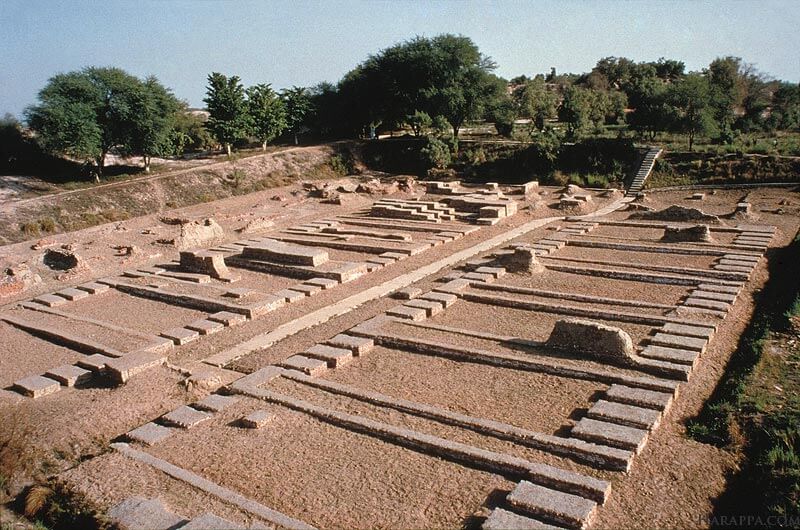
View of Granary and Great Hall on Mound F in Harappa
All the Indus Valley sites have been found to have granaries, citadels, burial grounds and bathing platforms. The granaries were huge in size and were very sophisticatedly designed. There were air passages to remove any moisture and keep the grains dry. This kind of advanced granaries was found only after 2800 years in Roman brick granaries.
18. All the structures were built of Burnt bricks of standard sizes
Bricks used in construction during the Mature Harappa Period were all manufactured in two basic sizes- 7 x 14 x 28 cms and 10 x 20 x 40 cms. The smaller bricks were used for the construction of residences and other smaller houses while the larger ones were used for public buildings, walls, etc. Both the types of bricks followed a ratio of 1 : 2 : 4.
There are also rock-cut structures found in Dholavira which shows they were not limited to bricks as a building material.
19. Most of the houses were two-storeyed and even three-storeyed with ample space within
The Indus Valley civilization had excellent masons who were able to construct load-bearing brick structures up to two stories effortlessly. These houses had a central courtyard and a flat accessible terrace.
20. Harappan houses were the first to have the luxury of attached bathrooms with flush toilets
Almost all the houses in Indus Valley Civilization had bathrooms with access to running water and toilets with sophisticated drainage facilities. This technology is way ahead of its time and is first seen in this civilization.
21. They were experts in creating complex water management system
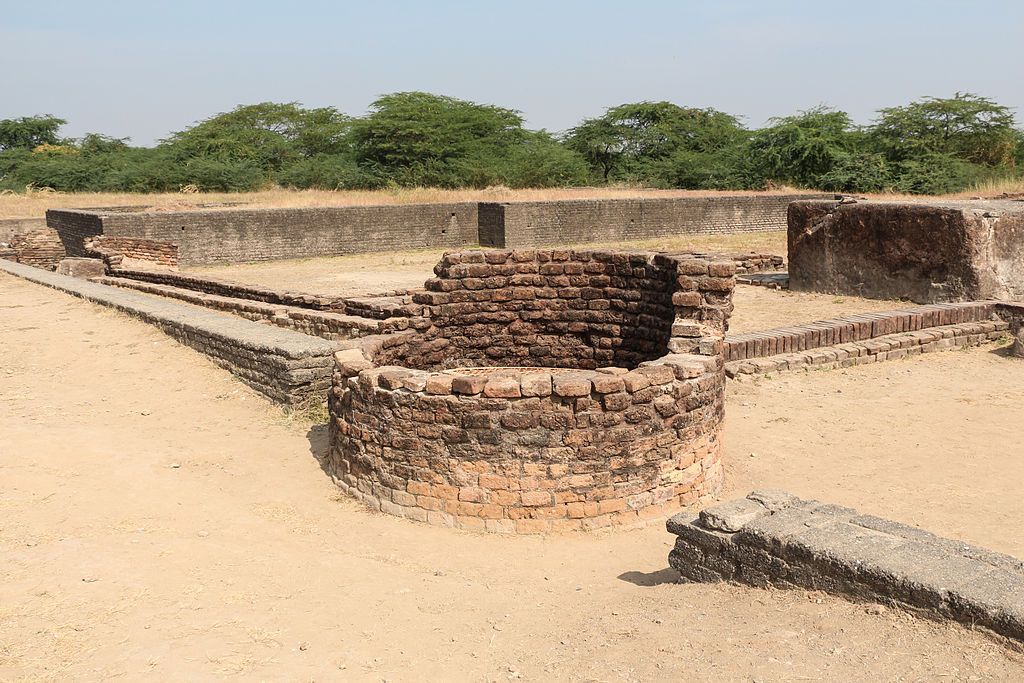
An ancient well, and the city drainage canals at Lothal
In Mohenjo-Daro, archeologist found a very advanced water management system with 80 public toilets and more than 700 wells. Every house had its own bathroom and wells were strategically located to supply water to every neighborhood. There was also a system to store rainwater. The discovery of earliest public water tank which is now known as Great Bath shows their skills in architecture.
The towns used to have Great Baths. Though the exact purpose of baths is not clear, it is believed that these might be used for religious bathing.
22. Awareness of hygiene
It is very clear that the Indus Valley people were well-aware of the importance of living and maintaining a hygienic life. They had put so much effort to provide personal and public baths for everyone, stormwater runoff channels, underground wastewater systems and even garbage disposal. These facts make their attempts to make a healthy and hygienic life quite obvious.
Archaeologists have found several brick containers that were strategically located along the street junctions of Mohenjo-Daro specifically for garbage disposal.
23. World’s Earliest Known Dockyards
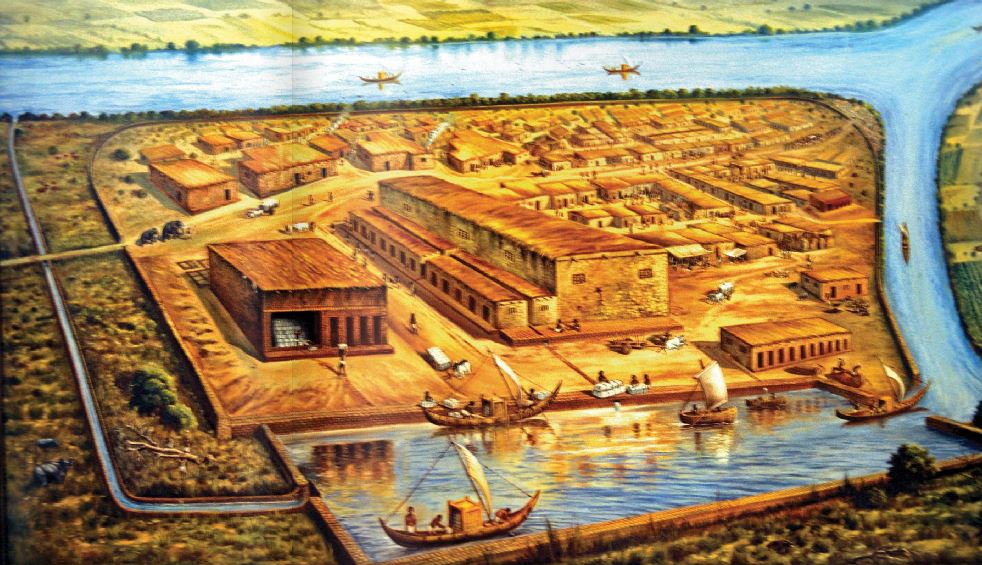
An artistic impression of how Lothal must have looked when it was a trading town. img: India perspectives
A vital and thriving trade centre of Indus Valley civilization, Lothal had the world’s earliest known dockyard. Spanning an area 37 meters from east to west and nearly 22 meters from north to south, the dock connected the city to an ancient course of the Sabarmati river, which was the trade route between Harappan cities in Sindh and the Saurashtra peninsula.
Balakot, Suktagendor, and Allahdin are other major port cities that give us an idea of the magnitude of the Maritime trade that existed with other civilizations.
24. At Dholavira there was a complex water management system to store water for the dry seasons
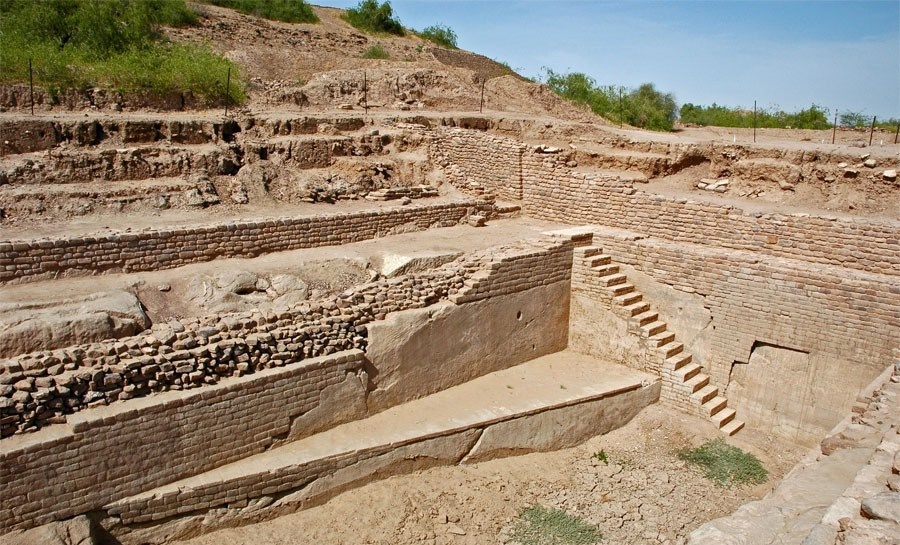
Water tank at Dholavira. img source
Cities like Dholavira build dams to control the flow of water so that they can store water in gigantic reservoirs. They used to store water for irrigation and for domestic supplies throughout the year. At Dholavira there were 16 reservoirs around the city. These dams and reservoirs solved two purposes- first, they protected the city from floods; second, they ensured water supply throughout the year.


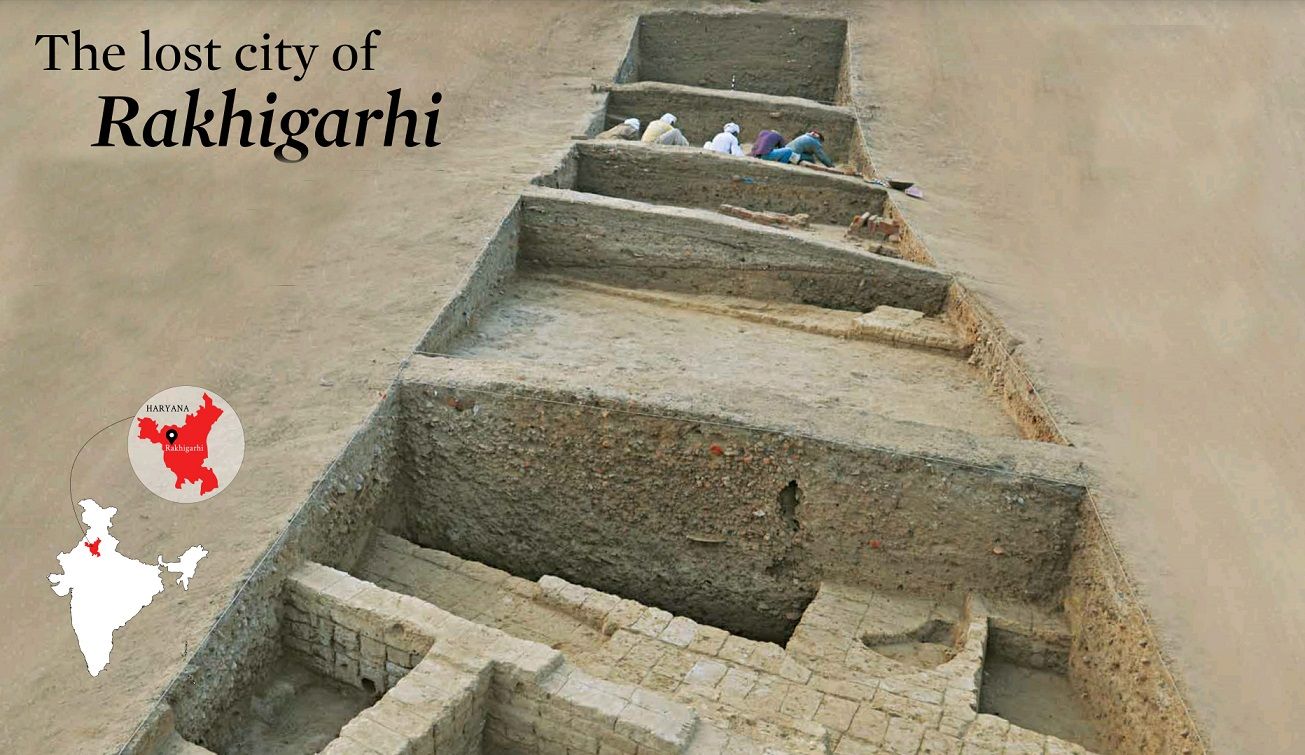
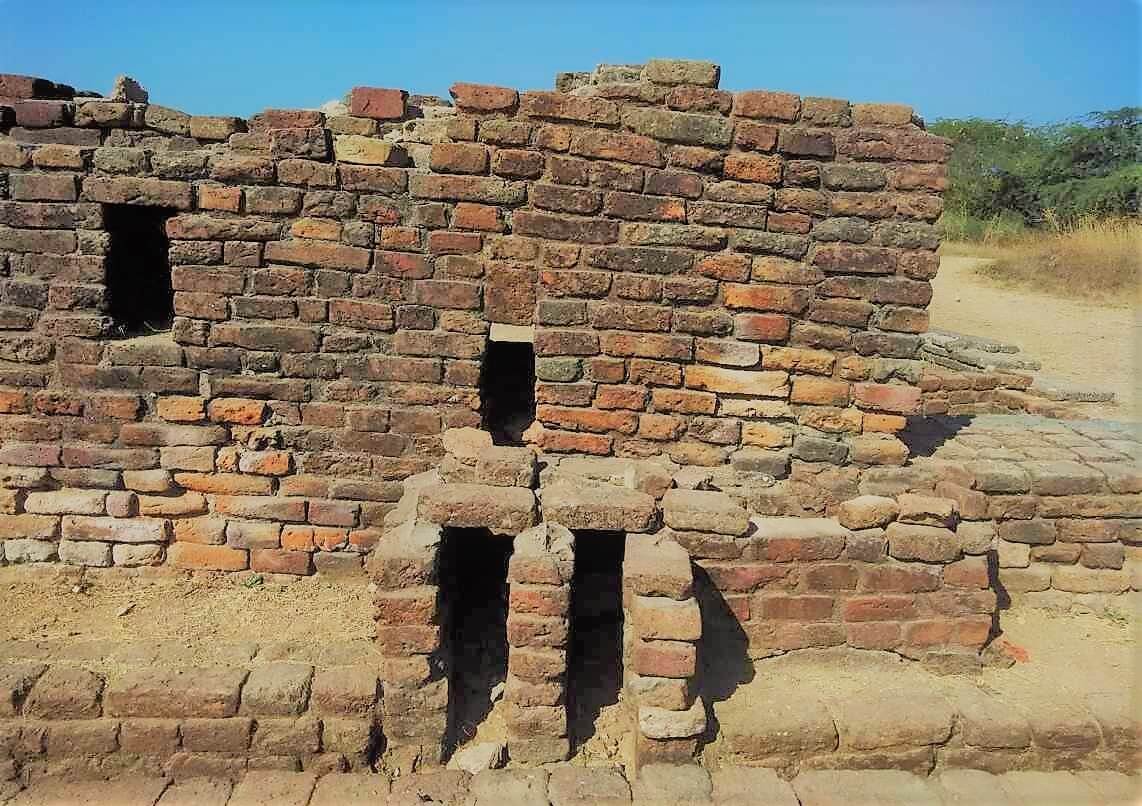
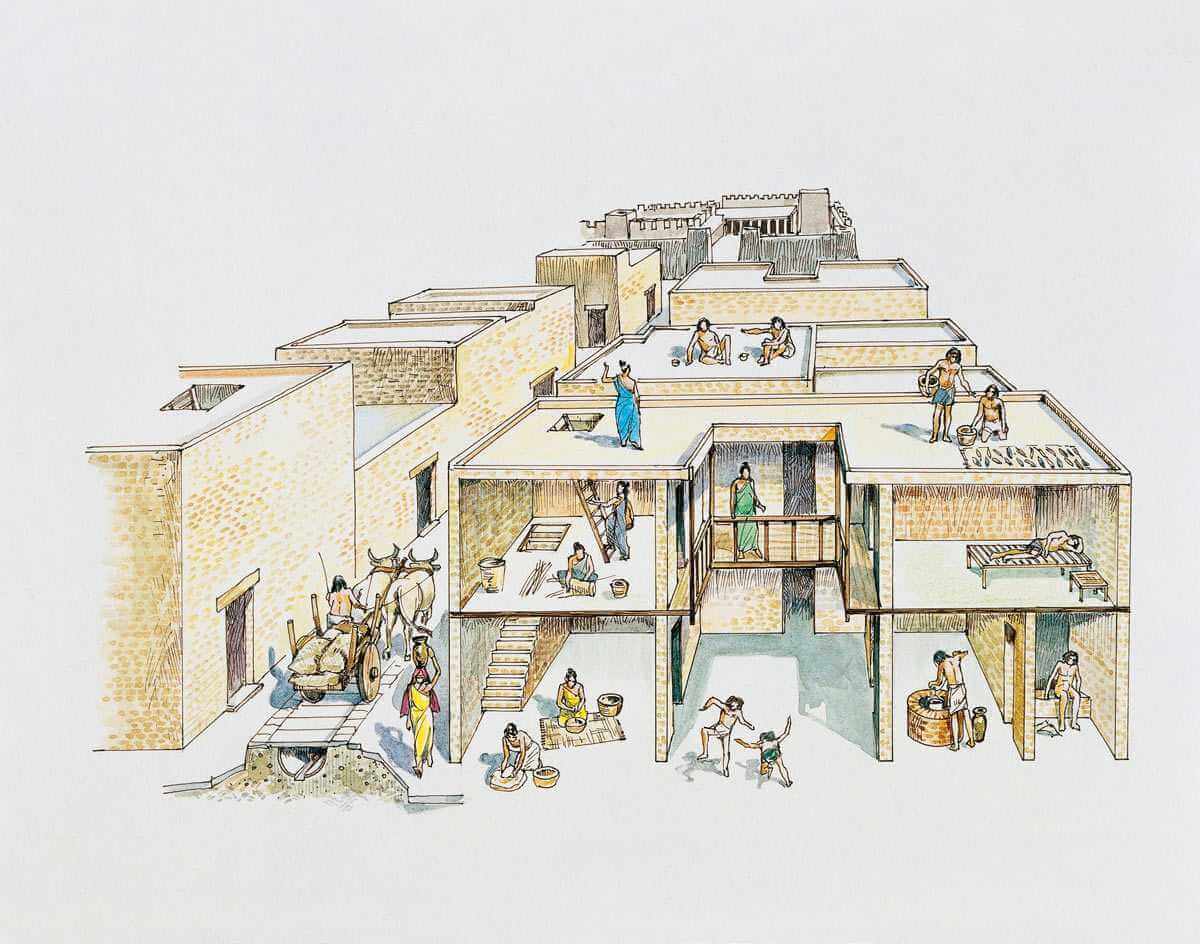
It is about time you guys woke up and did some ORIGINAL RESEARCH on Saraswati River Civilization!
To do this, you will have to start with a clean Slate; NOT take in to account a single word said so far on it by so called Historians, Archaeologists and self styled Experts…..
AND
You will come to KNOW the TRUTH about it; as have done I
HARI AUM TAT SAT BRAHM
What do you mean by Origional Research? A research done by Yogis and fake Baba who claim the whole wolrd was Hindu? Who claim Hinduism is 1000000 years old?
I will immediately snatch your rss as I can’t find your e-mail subscription hyperlink or newsletter service. Do you’ve any? Please allow me realize in order that I could subscribe. Thanks.
they were Indian.
When one reads about Harappan Civilization in Western Media, its very easy to see how it tends to diminish and water down what we know for sure, let alone what we speculate. It makes me feel angry, even though I’m a westerner without any biological ties with India. If we do not wish to speak about “spirituality”, we may talk about Archeology, Paleontology and all the sciences that study the past. Even without going to Harappa Civilization, a question arises : Who is a male dancing figure rock painting is doing in a 30 000 years old
World Heritage Site, in Bimbetka ? Or The Pashupati seal is exactly what ? Coincidences, right ? LOL…
hey
I was searching for some info regarding indus valley civilization. I have searched a lot but have not found enough. from this site I have come across very new and astonishing facts regarding IVC.
thanks. you are doing good job
keep it up..